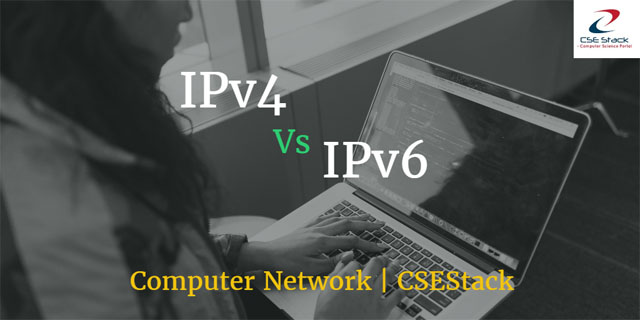Main Difference between IPv4 and IPv6 IP address in Computer Network
What is the main difference between IPv4 and IPv6 IP addresses? What are the limitations of the IPv4 address? Why do you need an IPv6 address?
These are the very common questions in Computer Network.
IP is an Internet protocol (one of the 7 layers in the OSI model). The IP address is of two types- IPv4 and IPv6.
In this article I will explain the compariosn between IPv4 and IPv6 IP address.

Table of Contents
What is the Limitation of IPv4 Address?
We can ask this question in different way.
Why there is a need of IPv6 address when we have IPv4 address?
IPv4 and IPv6 are the two different versions of the IP address. We have seen detail about IPv4 address space in the previous article and IPv6 is new involvement of the IP address space.
However, IPv4 has certain limitations. It can provide around 4 billion possible addresses with its 32-bit scheme.
Do you think that these numbers of IP address are enough?
If so, you are wrong.
There are many reasons to prove it wrong. I would like to discuss two of them which are highly impactive.
Reason One: IPv4 Addresses are not enough.
Networks are getting extremely growing. And it does not abide with connecting only computers and smartphones devices.
As technology like IoT is growing drastically. More and more IP addresses are assigned to the physical objects. This physical objects can be anything like your home appliances, vehicles and what not. Each of these physical devices requires a unique IP address.
To sustain this growth of IoT, IPv4 address space is not sufficient.
Reason Two: Limitation of hosts per network
Begins with one more reason.
There is a limitation on the number of hosts per network. For every network, there is assigned IP address class. This class has fixed numbers of IP address associated with it.
So the number of host in the network depends on the number of address allowed in an assigned particular class of IP address.
If one more host is to be added over the limit, it leads to wastage of IP addresses space. Because, For a just one IP address, one more class need to assign to the existing network or they have to be upgraded with new IP address class.
So it is sure, in the future, IPv4 address space is not sufficient. To combat this, there is a new involvement of IPv6 address space.
Before examining the difference between IPv4 and IPv6, there is nothing sneeze at IPv6 Address in short.
IPv6 Address Space and Its Range
It is the next generation IP addressing scheme with 128-bit addressing scheme expressed in hexadecimal notation.
This IP address includes 128 bits = 16 bytes = 32 Hex Digits.
Representation of IPv6 Address:
- It is represented in hexadecimal format.
- There are 8 chunks of 16 bits each.
- Each chunk is separated by a colon(:).
Example of IPv6 address:
FD15:EA23:AC37:BD56:1882:981C:A6AA:1234
Let’s compare IPv4 and IPv6 address.
Difference between IPv4 and IPv6
If you compare IPv4 and IPv6, you will find the following difference between these two IP address types
- IPv6 provides a larger address space.
- It has extended and better header format.
- IPv6 can accommodate with Possibility of extension.
- It is more secure than IPv4.
- More options are affordable with an IPv6 address.
Related Topic: Difference Between Subnetting and Supernetting
From the difference between IPv4 and IPv6, you can conclude that there are lots of advantages IPv6 over IPv4. Industries are inclining towards the use of IPv6 address space. This inclination will keep rising as the way IPv4 address space starts getting outreach to its limit.
Hay, your classification of the concept is nice. but can post a brief description of IPV6?